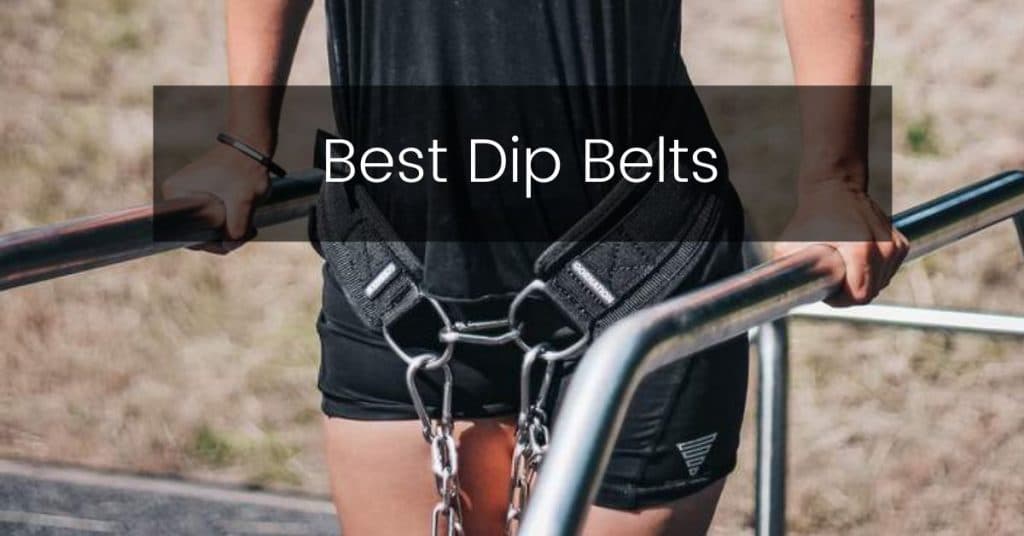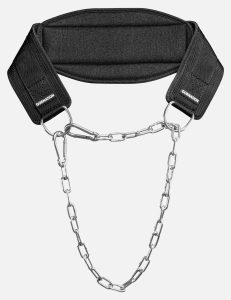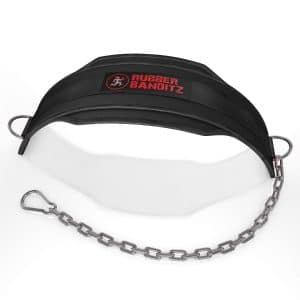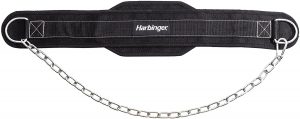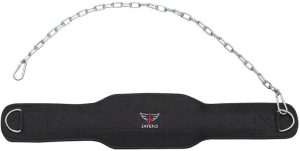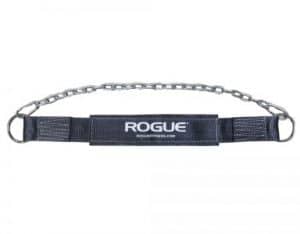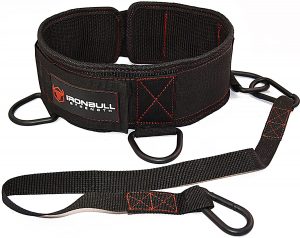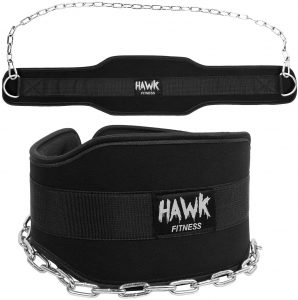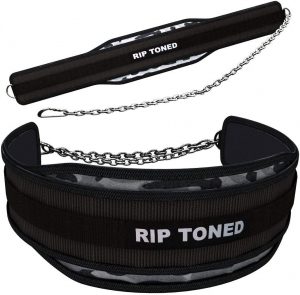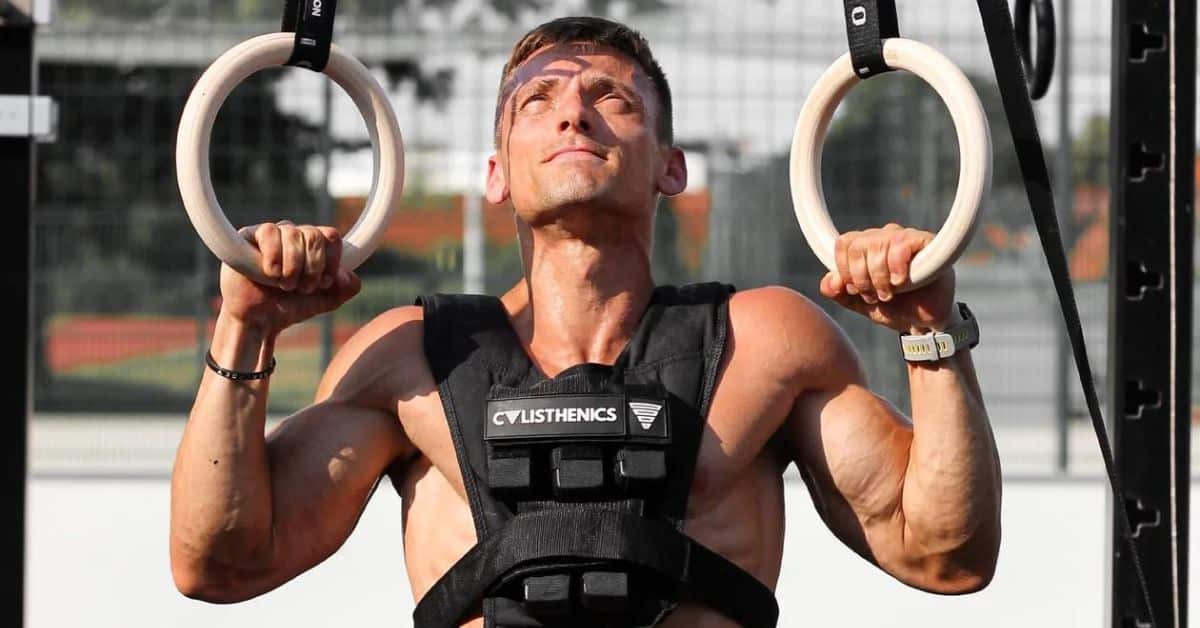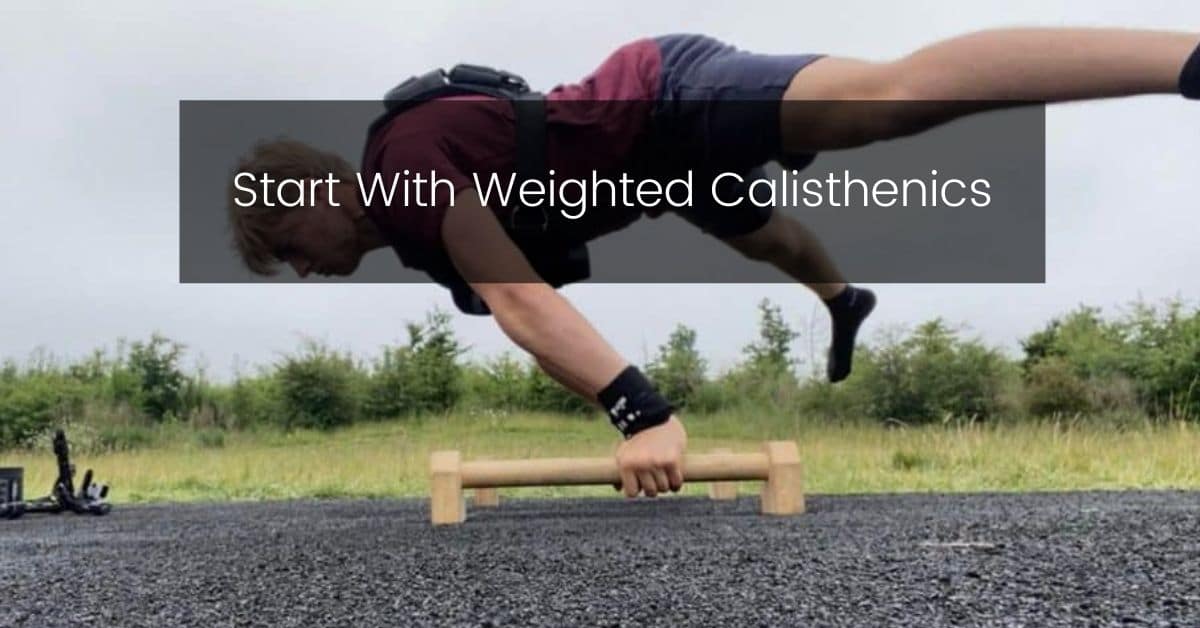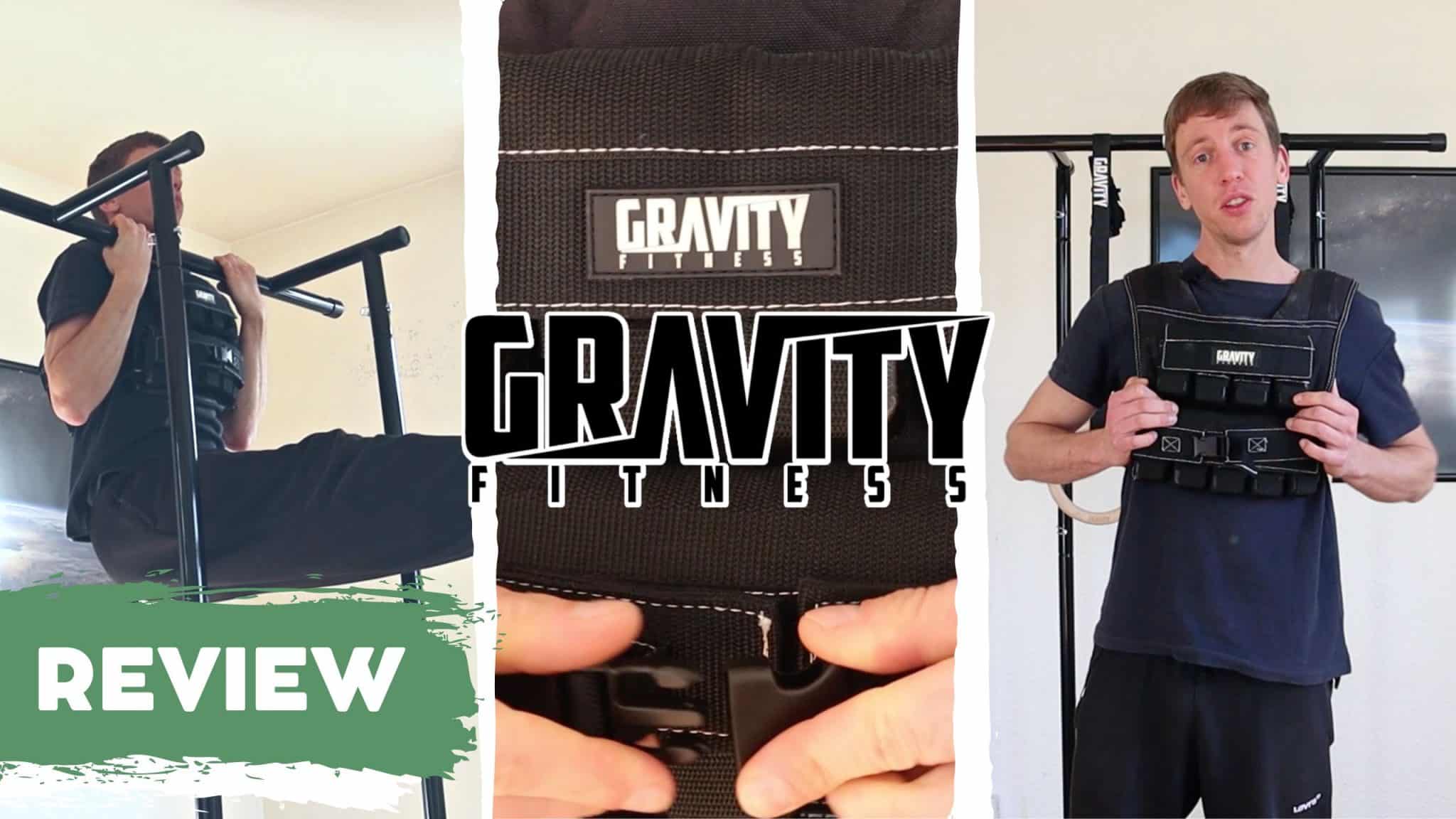- What is a Dip Belt?
- Dip Belt vs. Weighted Vests
- How to Choose the Best Dip Belt
- The 8 Best Dip Belts for Weighted Exercises
- How to Put on a Dip Belt
- How to use a dip belt
- Why Use a Dip Belt Anyway?
- Which weights to use?
- Exercises You Can Do with a Dip Belt
- Alternatives Dip Belts
- Frequently Asked Questions about Dip Belts
Dip Belts could be one of the simplest but best solutions for your calisthenics experience. Calisthenics uses your own body weight to train with, using it in various calisthenics exercises to strain your muscles and cause overload. But sometimes that just isn’t enough, either because you’ve reached a plateau in strength to which your bodyweight just doesn’t pose a challenge anymore or because your growth is too slow to your liking. In either of those cases, you can add additional weight to your body, for example by wearing a Dip Belt. So, what is a Dip Belt? What does it do and how do these belts work? Should you decide you want one, what are the best Dip Belts available? The answer to all this and more, waits below.
What is a Dip Belt?
Dip Belts are sturdy, durable belts with a steel chain which you wear around your natural waist and from which you suspend weights (usually either weighted plates or dumbbells). Unlike weightlifting, this leaves your hands free to do the actual calisthenics exercises. In a way, you’re not lifting the weight, you’re weighing down your body instead. This weighing down is done by attaching various weights to the belt itself.
As far as calisthenics equipment comes, this is one of the more popular products. You can completely customize the way you do calisthenics by increasing the weight however you please. This also means you can overdo it easily, leading to pathological atrophy (muscle breakdown).
Dip Belt vs. Weighted Vests
Weighted Vests are another method by which you can weigh down your body. They are also popular additions to the calisthenics equipment of many practitioners. Whereas Dip Belts are mainly used for doing dips, pull-ups, chin-ups and muscle-ups, Weighted Vests are much more versatile. You can wear a Weighted Vest during pretty much any calisthenics exercise, including jumping ones.
The big advantage to Dip Belts, however, is the weight you can put on them. Weighted Vests typically stop at 60 to 70 pounds. Dip Belts on the other hand can sometimes go all the way up to 2000 pounds and more! We’re not saying you should try and haul a small car on your waist, but that extra weight range does allow you to build up a lot more strength over time.
How to Choose the Best Dip Belt
While deciding on the best Dip Belt for you, you’ll be presented with a large range of different weighted belts. Most have their own merits, while others have none at all. As avid calisthenics practitioners ourselves, we use these belts regularly to do weighted calisthenics. For us, a good Dip Belt comes down to these 5 essential characteristics.
- Comfort: you’re going to be putting a lot of weight on them so they need to sit comfortably around your waist. Any tendency to cut circulation or produce any pressure point will become painfully noticeable after just a short time in use.
- Material: the belt needs to be strong but also manageable in size and bulkiness. Quality, rugged material with strong seams can make this happen.
- Durability: the belt will be put under a lot of stress and suffer its share of wear and tear. We don’t expect these things to last a lifetime, but it needs to stand up to this for a long time at least.
- Weight Capacity: preferably above 200 pounds, with no limit to the maximum. If it’s much less than a 200 pounds, you might as well use a Weighted Vest.
- Size: this ties in with comfort, it can’t be too big and certainly not too small. It must fit like a glove around your waist, or be able to be made to fit like that. Too big and it will chafe, too small and it will cut circulation, too bulky and you won’t be able to move properly, and so on.
The 8 Best Dip Belts for Weighted Exercises
10% off with our code: CWW10
Get it here:
Get it here:
Get it here:
Get it here:
Get it here:
Get it here:
Get it here:
Get it here:
Weighted Dip Belts come in various shapes and sizes. They have become very popular over the years and there are many to choose from. Unfortunately, this also means that not all belts are of a similar quality. We’ve selected the 8 best Dip Belts for you to use.
#1 Gornation Dip Belt
10% off with our code: CWW10
Get it here:
- Capacity: 2200lbs
- Chain length: 35”
- Carabiners: 3
- Discount Code: CWW10 (-10%)
With a carrying capacity of a whopping 2200lbs, enough to lift a small car completely off the ground, the Gornation Dip Belt starts off our list on the first place. How many Dip Belts does Gornation offer? Well, one. Just this five-star rated one and they don’t need to offer any other. This Dip Belt is perfectly adjusted for its intended use. With padding in all the right places and precision cut to neatly form-fit the body, you nearly don’t feel you’re wearing it (bar the extra weight of course). For the price, which is mid-tier, you’re getting an excellent, durable product which will last you many years.
Included in the package is the high-grade belt itself, a nearly 3-foot chain (90 centimeters), 3 steel carabiners, a carrying bag for the whole thing, a smaller mesh bag for the chain and a manual with instructions and tips on how to use the Dip Belt. What you’re also getting, of course, is that juicy 2200 lbs of playing room with the weight you can attach!
#2 Rubberbanditz Dip Belt with Chain
Get it here:
- Capacity: 275lbs
- Chain length: 30”
- Carabiners: 1
- 100% lifetime warranty
Comparable in quality to Gornation, the Rubberbanditz Dip Belt sits well and feels comfortable in use. The double layer Nylon which surrounds the padding material has been handsewn with double stitches, with additional reinforcement at the high-impact spots on the belt (like where the rings are sewn to the belt. The padding supports the weight just fine and distributes it across the lower-back. With a maximum capacity of 275lbs, this belt should prove sufficient for most calisthenics practitioners out there. The stainless-steel loops are overlapped by the belt underneath, meaning no cold steel will come in contact with your skin.
Rubberbanditz is confident enough about their Dip Belts that they offer a life-time guarantee. The Rubberbanditz Dip Belt comes with a 30” chain.
#3 Harbinger Dip Belt
Get it here:
- Capacity: 280lbs (tested)
- Chain length: 30”
- Carabiners: 3
Harbinger gives us a solid, reasonably comfortable Dip Belt which is thinner but with wider straps than most others. The thinner profile feels less bulky than other Dip Belts but also provides slightly less padding. This is compensated for by a wide strap which provides sufficient support and comfort for low to medium loads. It sits comfortably and is suitable for a load of up to 200 pounds. The Harbinger belt comes with a 30” stainless steel chain and two carabiners. Although not advertised, the chain also came equipped with a Quick Link, which allows you to adjust the length of the chain as needed and come to an ideal girth for your waist.
The manufacturer does not give a specific weight capacity. The carabiners (the weakest links) are rated for up to 280lbs of safe work.
#4 Jayefo Dip Belt with Chain
Get it here:
- Capacity: 350lbs (tested)
- Chain length: 36”
- Carabiners: 2
In a similar category as Harbinger, we find the Jayefo Dip Belt. We say similar but just a little less in almost all regards. The belt sits comfortable around your waist and is padded using memory foam. That works very nicely up to a certain load. After that, the foam will compress less and less and become rock-hard itself. The provided chain is 36” long and comes with two carabiners. The Jayefo Dip Belt also comes with its own bag and a lifetime guarantee. It has been tested to 350lbs, although the manufacturer does not give us a weight capacity themselves.
#5 Rogue Dip Belt
Get it here:
- Capacity: 29,400lbs!!
- Chain length: 30”
- Carabiners: 2
If you thought Gornation was a heavy puller, then check out the Rogue Dip Belt with an absolutely mindboggling 29,400lbs! To put this into perspective, that school bus you used to take to elementary? That was “only” 26,000 lbs. You’re not going to break this belt. There is a downside to this. To make this level of strength a possibility, the Rogue Dip Belt is kept as simple as possible. The back support isn’t much wider than the straps and it lacks padding. It comes with a 30” steel chain, which believe it or not is actually the weakest part of the belt!
Why use this belt over more comfortable options? When you’re preparing for a bodybuilding contest and you need your legs at least as thick as your arms.
#6 Iron Bull Strength Advanced Dip Belt
Get it here:
- Capacity: 250lbs (tested)
- Strap length: about 30”
- Carabiners: 2
Iron Bull comes with a slightly different take on Dip Belts with their Strength Advanced Dip Belt. It does not feature a chain and is instead 100% made of strong nylon fabric. The Iron Bull belt doubles as a sled harness. It has 3 fixture points on the belt, two at the ends and one in the middle, which would be behind your back. Since the only metal parts are the triangular rings, the belt can be better customized to a perfect fit around your waist. It is also available in 5 different overall sizes (see below on how to put a Dip Belt for more information regarding this).
The Iron Bull sits snuggly and feels comfortable. But being all fabric begs the question of how durable it is. In fact, we don’t think it’s any less durable than a chained alternative. That’s because the strap carrying the weights is separate from the belt. You use carabiners to attach the strap to the belt on metal loops. So really, the only difference in material is in the suspension. Tests show that the strap can take up to 250lbs without tearing. If the strap does wear out, it’s cheap to replace. Or buy a chain from your DIY supplier instead.
#7 Hawk Fitness
Get it here:
- Capacity: 300lbs
- Chain length: 36”
- Carabiners: 2
With thick foam padding and a no-frills design, the Hawk Fitness offers an affordable, entry-level Dip Belt which satisfies a lot of needs. The edges are rounded and the belt sits comfortably. It can take up to 300lbs of weight on its 36” chain. At this price point you’re really looking at a one-size fits all kind of deal but on the plus side, the Hawk Fitness belt doubles as a lifter’s belt. It closes around your waist with Velcro, protecting your spine during heavy lifting.
#8 Rip Toned
Get it here:
- Capacity: 200lbs
- Chain length: 36”
- Carabiners: 1
If you’re concerned about your inheritance, Rip Toned has got you covered. With a 36” chain, the weight will be hanging between your knees typically. The chain itself is of a lighter design which doesn’t impact enough momentum to cause you agony should contact with the crown jewels occur. The straps and back are comfortable enough for light to medium loads and the belt itself is rated for 200lbs. Padding is adequate, although the belt feels quite light. It comes with Velcro lining, allowing it to be used as a lifter’s belt as well.
How to Put on a Dip Belt
The first thing to remember is that a Dip Belt goes around your natural waist, not your hips like a regular belt. Your natural waist is where your spine pivots, separating the upper torso and lower torso. It lies just under your ribcage and above the widest part of your pelvis. For most people (provided you’re not overweight) this is the thinnest part of the torso when viewed from the front.
Wearing the belt on your natural waist takes most of the weight and lets it rest on the strongest part of your body: Directly parallel to your core and legs. Remember, you’re not “lifting” these things, you’re weighing down your body and as such your whole body should feel equally weighted, not any one limb, set of limbs or muscle group.
The band should loop around your natural waist, with the steel rings where the chain attaches resting flat on the front of your hips with the rings themselves flush against the area between your pelvis and the pubic bone. This ensures all the weight will be carried by your natural waist (and thus your core) and not your hips.
The belt can then be fastened with the carabiners in a number of ways, either directly through the steel loops or by the chain.
How to use a dip belt
Once you have comfortably fitted your Dip Belt around your waist, it is time to fasten it and attach some weights. This can be done in 3 ways, two correct one and an oft-cited but incorrect method which we’ll show as well.
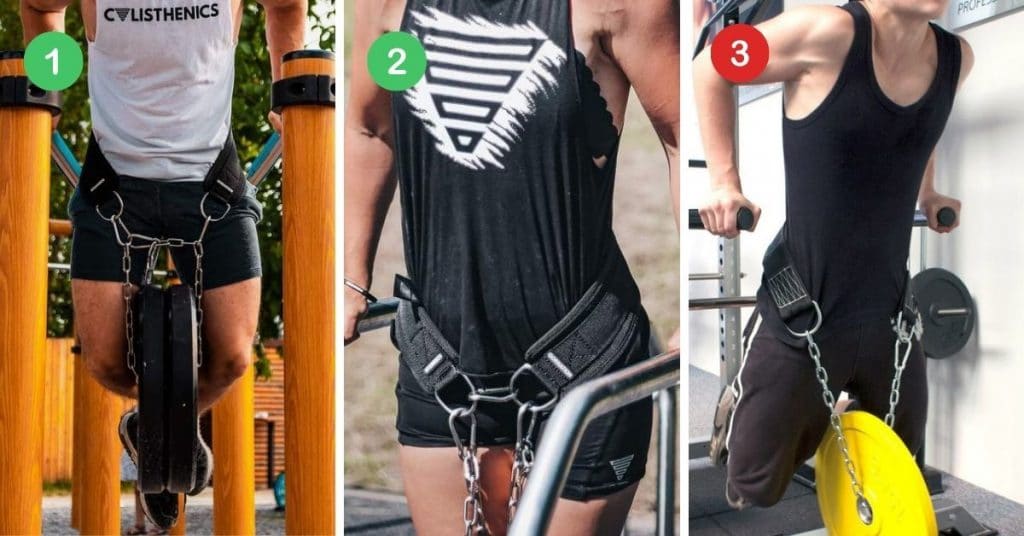
Correct Method #1
- Loop the belt around your back as described above.
- Use a carabiner to fasten the belt around you through both loops. The carabiner acts as a belt clasp.
- Run the chain through the weight and attach the ends of the chain to either loop with a separate carabiner each.
The weight is now free swinging between your legs (yes, we know. Grow up). This is the simplest, secure method of using a Dip Belt since a separate carabiner is in place to keep the belt securely around your waist.
Correct Method #2
- Loop the belt around your back as described above.
- Attach one end of the chain to one of the loops with a carabiner
- Run the chain through the weight and then run it through the other loop on the belt.
- Attach the end of the chain to the first loop with another carabiner.
This method allows you raise or lower the weight by running the chain twice or more through the loops and weight. It also naturally tightens the belt around your waist through the workings of gravity.
Incorrect Method
Unfortunately, there are still many who do this and there are even sellers who will tell you that this is the way. When you’re new to Dip Belts you’ll believe them, of course. But it doesn’t take a rocket scientist to figure out that this is a dangerous method to use your belt. What they’ll do is something like this:
- Loop the belt around your back as described above.
- Attach the weight to the middle of the chain.
- Attach the ends of the chains to the rings of the Dip Belt.
The weight is now free-hanging from the chain and the belt is not held tight around the waist. While doing dips this will require you to arch your back backwards and keep your hips tilted back as well. If you don’t do this, the belt will slip either onto your hips or off your body entirely. The tendency to slip towards your hips is hard to prevent anyway and this method will put too much strain on your back. The whole reason behind Dip Belts is to weigh down your whole body, not to put strain on one particular muscle group. This is an injury-prone method of using the belt.
Why Use a Dip Belt Anyway?
Your own bodyweight will at some point no longer be sufficient to cause overload. You’ll have become so strong that you can support your own weight practically indefinitely. You’ll notice this if you can do dozens or even hundreds of repetitions without really feeling anything in your muscles. You’ll become out of breath, sure, but that’s just oxygen depletion. Once you’ve caught your breath, you could do the same thing again and again.
To cause better overload and progress in your athletic endeavor, you’re going to need to add weight artificially. Traditional weightlifting has you take hold of a heavy object and lift these either with your arms or in some other fashion defy gravity with your body. In all instances, however, your hands are no longer free since you’re holding the weights.
Dip Belts keep your hands free. This means you can do a lot more versatile exercises, training muscles and muscle groups which are harder to develop with traditional weightlifting. What’s more, calisthenics focusses more on building stamina by its very design. So not only will you become stronger, you’ll also increase your stamina.
Which weights to use?
Theoretically you could hang any weight from your Dip Belt, provided there’s a hole or loop you can run the chain through. The two most sensible options, however are either kettlebells or weight disks (the ones you normally place on a lifting bar). Which of these two are more suitable for you depends.
Kettlebells are easier to transport than weight disks. They also come in heavier sizes, like 90 pounds. You’ll have fewer heavy parts to haul with you. They are generally more expensive than weighted disks. If you’re set on a particular weight, then this is the preferred and most likely cheaper method since you only have to buy 1 kettlebell.
Weighted disks on the other hand can be better fine-tuned by adding or removing disks from the chain. If you’re also using a lifting bar or maybe even a Power Tower, you should already have the weight disks anyway.
Exercises You Can Do with a Dip Belt
You’ll have noticed the big heavy weight you’ve got dangling from your waist when wearing a Dip Belt. This limits your range of motion when it comes to calisthenics exercise. The following exercises are very suitable with the use of a belt.
Dips
As the name implies, Dip Belts were made with doing dips in mind. You’re not moving your legs much and the added weight will increase the difficulty and overload of your chest muscles and triceps. Let the weight hang steady and in front of you. That way, the weight will naturally gravitate towards your center of balance as you do the dips.
Pull-Ups
Pull-Ups, including Chin-Ups are another set of exercises where the Dip Belt is a popular addition. The increased weight you have to pull upward can make a major difference in developing those biceps and back muscles. Be aware that the weight will have the tendency to pull you straight under the pull-up bar (straight beneath your hands), while you’re trying to pull yourself past the bar. That additional strain can hurt your back, so start of very light and build this up gradually.
Squats
Doing squats with a Dip Belt can cause significant gains to your leg day regime, although using a Weighted Vest is more ideal for this. Your main issue here will be ground clearance. Make sure the chain is as short as comfortably possible (see above for the correct wearing method). If the ground clearance isn’t enough either way, you can try standing on two boxes or the lowest step of a staircase. Belts are actually very well suited for doing squats since all the weight rests on the waist, thus the legs and not the spine.
More out-of-the-box uses for your Dip Belt
These are some additional ideas to make use of your Dip Belt in a more creative or makeshift way.
- Sled Pulls: wear the Dip Belt backwards and pull the weights behind you. They’re not as comfortable as a Sled Harness but it gets the job done nonetheless. Make sure you bring an appropriate sled, that it is allowed in the gym and that you don’t damage the floor.
- Decline Push-Ups: you can do Decline Push-Ups with the Dip Belt around your waist. This will add weight to your body and makes the exercise much harder. When you’re parallel to the ground, the belt will tend to focus all the weight to the middle of your spine, which can tire and cause injury. It will also tend to slide up your body towards your chest. More ideal would be a Weighted Vest for this exercise.
Alternatives Dip Belts
Before the best Dip Belt for you had arrived at your doorstep, you may want to experiment with these alternatives.
- Clench onto a dumbbell: the simplest way to mimic the effect of a Dip Belt is to simply clench a dumbbell between your legs. Not very comfortable and you’ll have to continuously strain your thighs.
- Weighted Backpack: if you’ve served, this should be a familiar one. This is what your DI or DS thought calisthenics meant. Wear a comfortable backpack, preferably with broad and padded straps and fill it with weights. Put the backpack on the other way (so in front of you) as you need it for various exercises.
- Resistance Band: run the band through the handle of a kettlebell, or the opening of a weight disk. Take one end of the band and run it through the loop of the other end, pull it taut with the weight. Wrap the band around your waist once or twice (depending on the length of the band), then run it through the handle/opening of the weight again. Pick up the weight and drop it through the loop of the band and pull it taut as well. Your resistance band is now a Dip Belt. Some say this will wear the band faster, but with moderate weights of around 100lbs this shouldn’t be a big problem.
- Weighted Vests: the most obvious alternative is to use a Weighted Vest since they serve almost the same purpose. Weighted Vests have the advantage of allowing you a full range of motion. Their disadvantage is a more limited total weight capacity.
Frequently Asked Questions about Dip Belts
These are some other, commonly asked questions about weighted belts.
In overall performance, comfort, weight capacity and price the Dip Belt from Gornation is the best brand.
Yes, you can. Shorten the chain until the weight is as high up between your legs as is comfortable. If you still don’t have enough ground clearance, stand on two low boxes or the lowest step on a staircase.
Dip Belts can frequently hold more than 200 pounds of weight, most go over this many times and the highest quality ones, like the ones from Gornation, can take up to 2000 pounds of weight. That should be plenty for any human being to train with.
The chain provided should be long enough, in most cases. If yours is too short either way, you can substitute the provided chain for any high-gauge steel chain available from a DIY supplier.


